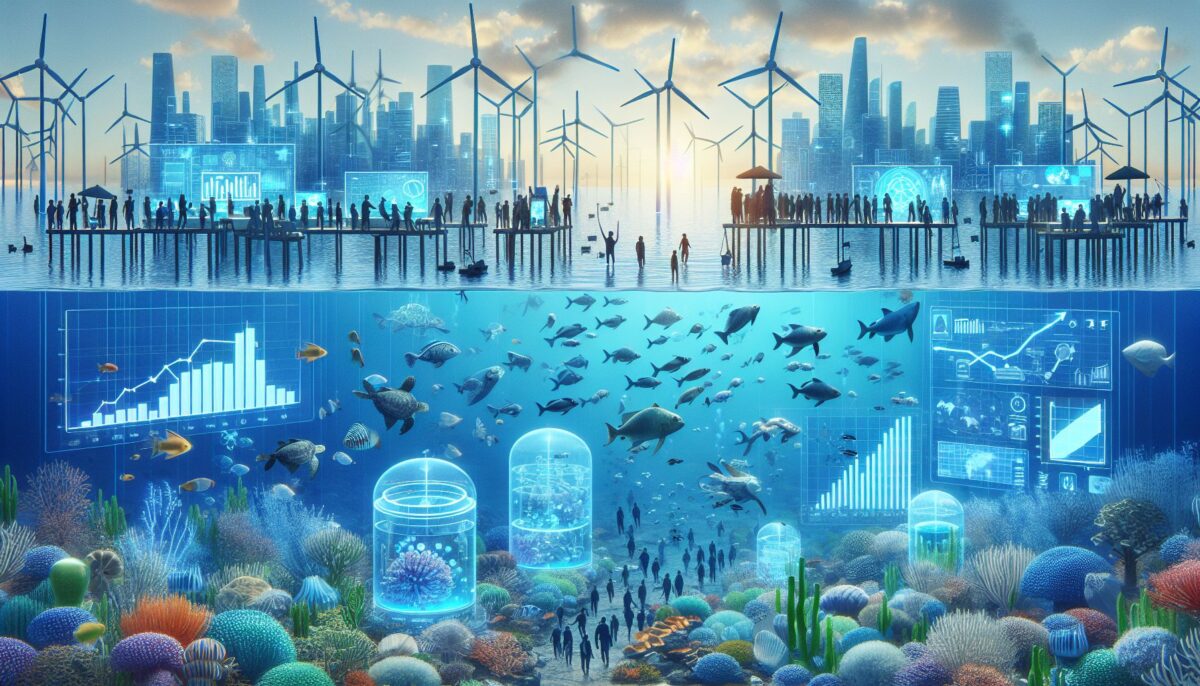As we all know, three-fourths of our planet is covered by water—but have we ever contemplated the humongous potential this expanse offers? These vast water bodies, especially our oceans, encapsulate a prosperous ecosystem, undiscovered resources, and manifold types of marine life. Remarkably, a new concept has emerged to bring these potentials to light called the ‘Blue Economy’.
Although often considered synonymous with marine life or oceanography, the Blue Economy is quite more than just biological or geological study. The term doesn’t merely refer to the economic benefits of the ocean, but it’s more about understanding and implementing sustainable use of ocean resources to stimulate economic growth, while preserving the health of the ocean ecosystem. World Bank definition
The Blue Economy is believed to possess the capability of improving human well-being and social equity, decreasing environmental risks, and enhancing economic opportunities. But, what exactly constitutes the Blue Economy? How can we harness its potential? Let’s delve further into the labyrinth of Blue Economy and its potential.
What Constitutes the Blue Economy?
The construct of the Blue Economy primarily involves sectors that are directly or indirectly connected to oceans, seas, coastal areas, and other substantial water bodies. It includes diverse activities like fisheries, aquaculture, tourism, maritime trade, shipping, and ports, apart from offshore drilling, oil rigs, and coastal management. Expeditiously evolving, the Blue Economy has started to include sectors like desalination, tidal energy, wave energy, and new forms of marine spatial planning. World Wildlife Fund
Potential of Blue Economy
The Blue Economy offers immense possibilities for sustainable growth, development, and innovation. Let’s unfold some of these opportunities below:
Renewable Energy
Blue Economy promotes the utilization of renewable energy resources like tidal, wave, and offshore wind energy, which can considerably reduce the dependency on fossil fuels. Wind, wave, and tidal energies are still relatively untapped, and ocean thermal energy conversion (OTEC) and salinity gradient power production also hold significant potential. International Renewable Energy Agency
Sustainable Fisheries and Aquaculture
Fisheries and aquaculture form an essential component of the Blue Economy. These sectors not only contribute to global food security but also generate income for millions engaged in the fishing industry. With the advent of sustainable fishing practices and advanced setup of aquaculture, the industry is set to offer more promising prospects.
Maritime Trade and Transportation
Around 80% of the world’s trade volume and over 70% of its value is carried on board ships and handled by ports worldwide. The Blue Economy envisages increasing the efficiency, augmenting the capacity, and reducing the environmental impact of these activities.
Tourism
The ocean economy is also a prominent contributor to the world’s tourism industry. From coastal and marine tourism that include beach holidays, wildlife watching to cruise tourism and yachting, these are major foreign exchange earners and job creators in many parts of the world.
Marine Biotechnology
Marine life, comprising algae, plankton, corals, and diverse marine organisms, often host unique biological and chemical properties. Unlocking these potentials can give way to new pharmaceuticals, bio-fuels, and other biotechnological applications.
The Blue Economy embodies the real essence of sustainable development—combining economic, social, and environmental aspects together. By involving local communities and using resources sustainably, it can empower millions of people and safeguard our invaluable oceans.
So, as we stand at the juncture where over-exploitation and contamination of our oceans have become major threats, the concept of Blue Economy could pave the path for sustainable growth and development. As the saying goes, “The future depends on what we do in the present,” it’s time to take action for preserving our precious water bodies while ensuring their optimal utilization for the benefit of all.
